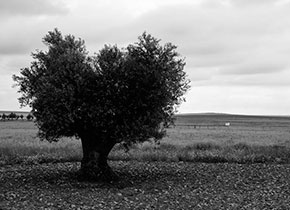History
The olive tree, Olea Europaea, was introduced onto the Iberian peninsula by Phoenicians and Greeks in about the first centuries BC. The Romans extended olive cultivation and improved oil production techniques. Oil trading -mainly by sea- played an important role in the development of the Mediterranean economy. Oils from Hispania, the largest supplier of this precious liquid, were considered to have the best quality and were normally consumed in Rome and many other parts of the empire.
 But olive oil also had other uses apart from cooking. It was a religious, medical and nutritious symbol. It was used to anoint kings, athletes and newborn babies, as a hygiene and beauty product, as fuel to light lamps in temples, as a lubricant for tools and farm equipment, as waterproofing for textile fibres...
But olive oil also had other uses apart from cooking. It was a religious, medical and nutritious symbol. It was used to anoint kings, athletes and newborn babies, as a hygiene and beauty product, as fuel to light lamps in temples, as a lubricant for tools and farm equipment, as waterproofing for textile fibres...
The Arab invasion in Spain increased olive cultivation and techniques to obtain oil were perfected. The link was so strong that the Spanish word for oil "aceite" comes from the Arabic "al-zait" which means "olive juice".
Olive trees were taken to the "New World" by the Spanish in the XVI and XVII centuries and they can be found today in California and in different parts of South America.
Spain is currently the first olive oil producing and exporting country in the world.
